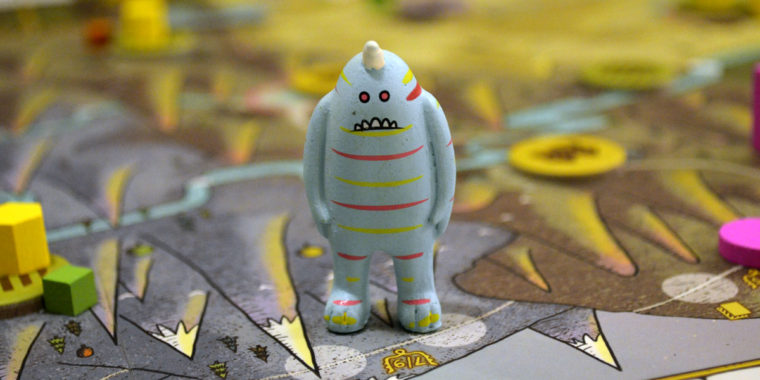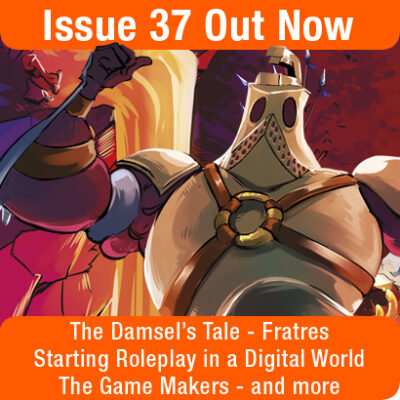It is about control. It always is. Control of communities, what and where they produce. Control of guilds, when they take action and in what way. Control of the people, turning them into tools as a means to an end. It is about taking control, and turning it into power.
Feudum is a resource management game for 2-5 players. Each player takes on the role of a banished noble, arriving in a new land and determined to reclaim their honour and status. They will do this by securing control of towns, joining guilds and serving the King. All to secure points. The player with the most points at the end of the game wins.
Play happens on a large central board, which contains a number of distinct sections. The centre is dominated by a map containing six separate areas, with each area containing paths and settlements. Paths vary in type from roads, to rivers and airways. Certain types of paths can only be travelled with particular vehicles, which players can purchase from a guild.
Settlements are randomly placed during the games setup. Claiming a settlement first puts that player in control of it, with any player who claims it second becoming a serf. Different settlement types provide players with varying rewards, such as farms producing resources. Players aren’t locked into what settlements are on the board, as they can be upgraded to become different settlements. The outpost, for instance, can be changed to a much more powerful feudum.
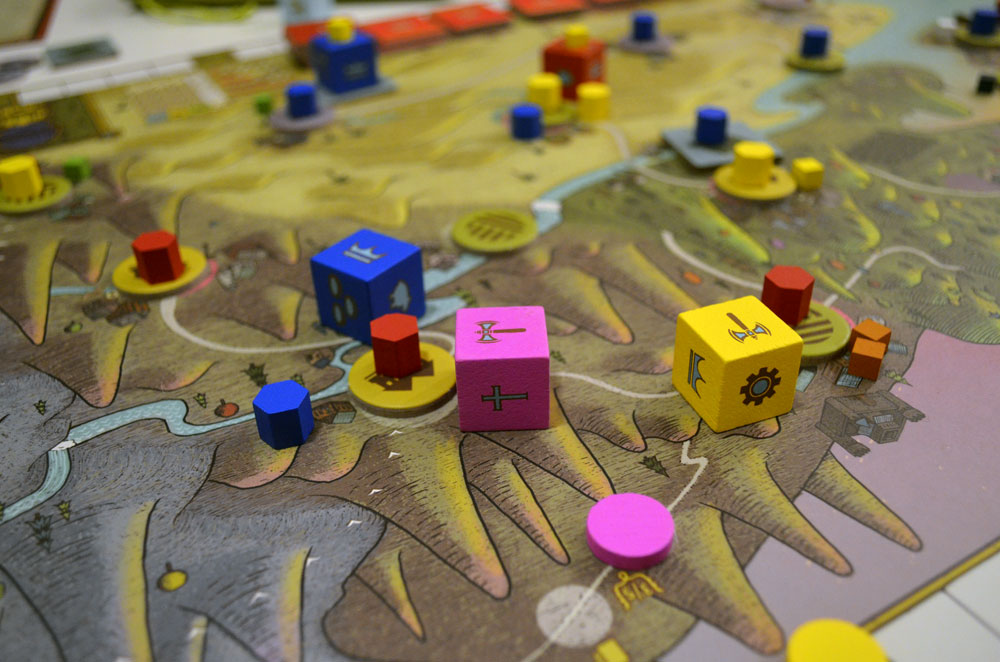
On the far ends of the board are the six guilds, split into two groups of three. Guilds interact with the guilds neighbouring them. All players can activate a guild, and claim a standard reward. Any player with the most prestige within a guild is made Guild Master, which allows them to push resources out of the guild into the next. Any other players with prestige in the guild are Guild Members, and may pull resources from the previous guild.
Players take actions using a hand of cards. All players possess the same selection of cards, and each round chose four to play. These allow the players to perform a number of actions, such as generate resources, move pawns or activate guilds. On the board the player is represented by a number of pawns, cubes with corresponding guild insignia each side. Each insignia provides a different power, and when the pawn is placed it provides the player prestige in that guild.
The game runs on a time counter called epochs. This consists of six stacks of four tiles, arranged on the board near the map. Certain actions taken by players, or the end of a round, result in these tiles being removed. Once a threshold of tiles are revealed the game advances an epoch. Collecting these epoch tiles can be useful, as they yield additional resources when played onto the board.
Each time an epoch is reached the players go through a process of scoring. Points are awarded for achieving certain goals, and markers are placed along the points track around the outside of the board. In certain epoch’s players who need to have provided military service to the King, and have not, have their points deducted. At the end of the game additional points are awarded for fulfilling things like exploration cards.
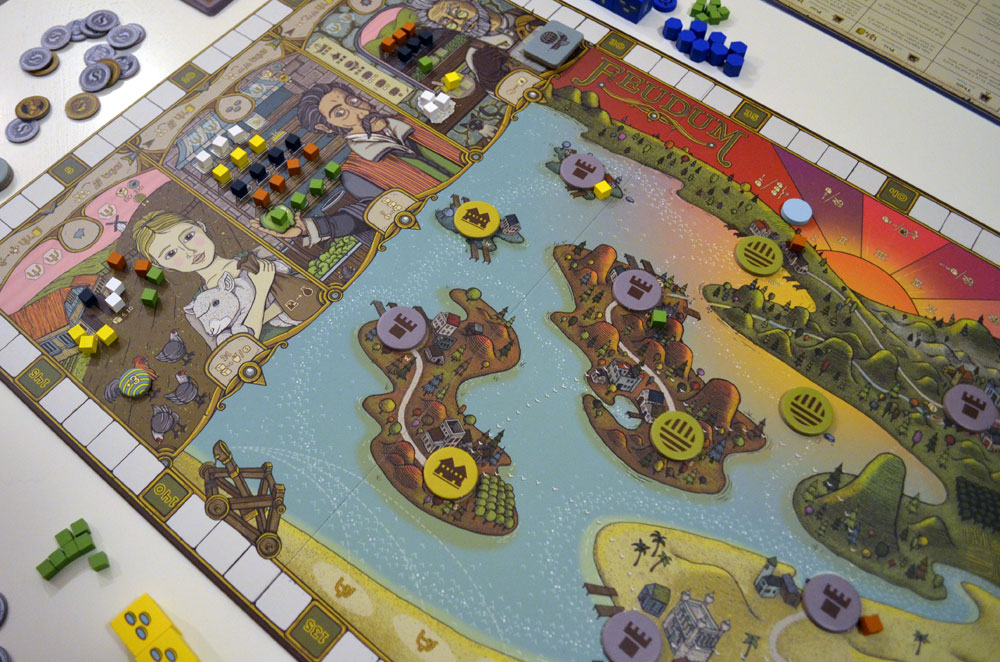
If this sounds like a lot is going on, it’s because it is. Feudum is quite a heavy game, tending towards play which rewards long term vision and tactical management. The elements of the game are cyclical, the guilds trade between each other in an infinite loop, for instance. Each part of the game feeds into itself in a way which makes every element important.
Feudum excels in its ability to cater to a wide variety of players and play styles. If an economic approach is your focus, it can accommodate that. More interested in being aggressive, and taking the fight to your opponents and monsters? It can do that too. With each element linking together this also means that, whatever play is made, it feeds back into the other players to keep the game rolling along.
The epochs are an interesting concept for a game timer. Each game will have the same number of epoch tiles, and epoch phases. But with the varied way in which when, and where, they are removed each game is tension filled as the timer counts down. With the epoch tiles having beneficial resources on the other side, it makes collecting them very attractive, but at the cost of speeding play towards the next epoch phase.
Where Feudum falls flat is in some of the execution. Certain tactics seem far more rewarding than others. Taking control of feudums yields bonus points, but at the risk of losing points for failing to serve the King with military service. Whereas doubling down on one task, like farming, can result in far greater rewards for much less negative results.
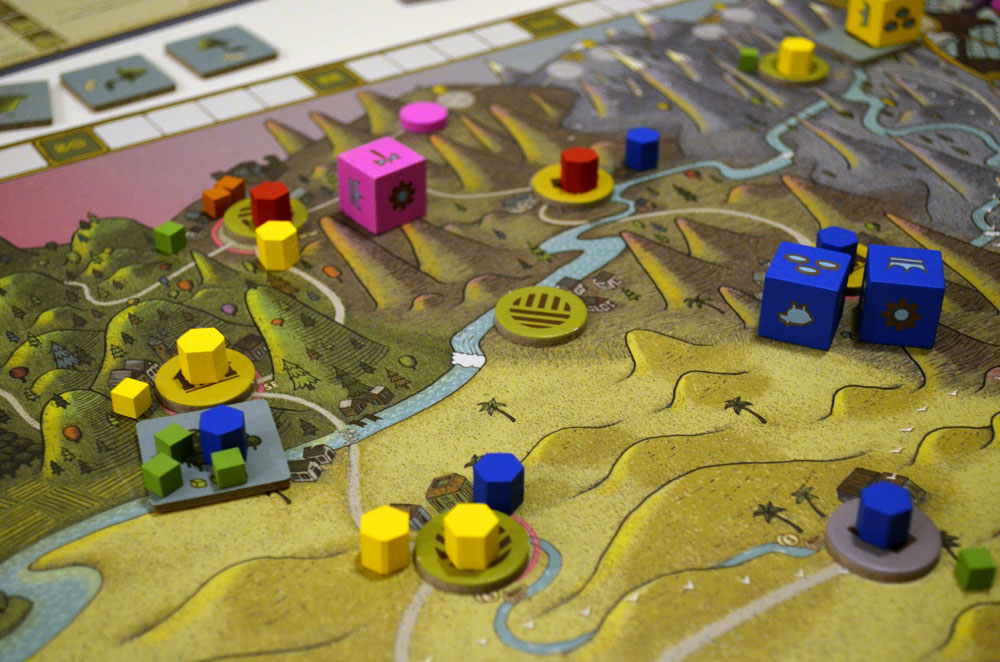
It seems to be that the game rewards those who make a decision about how they are going to play at the start of the game, and optimising each action to achieve this. There are a lot of options on what to do, but changing focus only appears to result in diminished gains. So those who like to play in a more reactionary way are ultimately headed for failure.
The criteria the epochs use to move to the next phase grow less with each round. So by the last few epochs the game is flying by. It is a nice touch, but there are occasions where everything seems to suddenly come to a grinding halt. It can feel anticlimactic at those times were things seem to be coming to a head, and the players are genuinely interested to see the outcome of events on the board.
With so many elements using basic shapes some accessibility has been lost. The resource cubes, and some of the player pieces, can easily be confused between each other by people with colour blindness issues. Elements like the board and cards can contain quite small pieces of information, which again can be a problem for those with sight limitations.
Even those without these considerations can have trouble, thanks to some questionable choices in either design or printing. For instance, sulphur is designated by a yellow square, which on some cards looks green. So too some of the action card designs could be much clearer on what the card is intended to do.
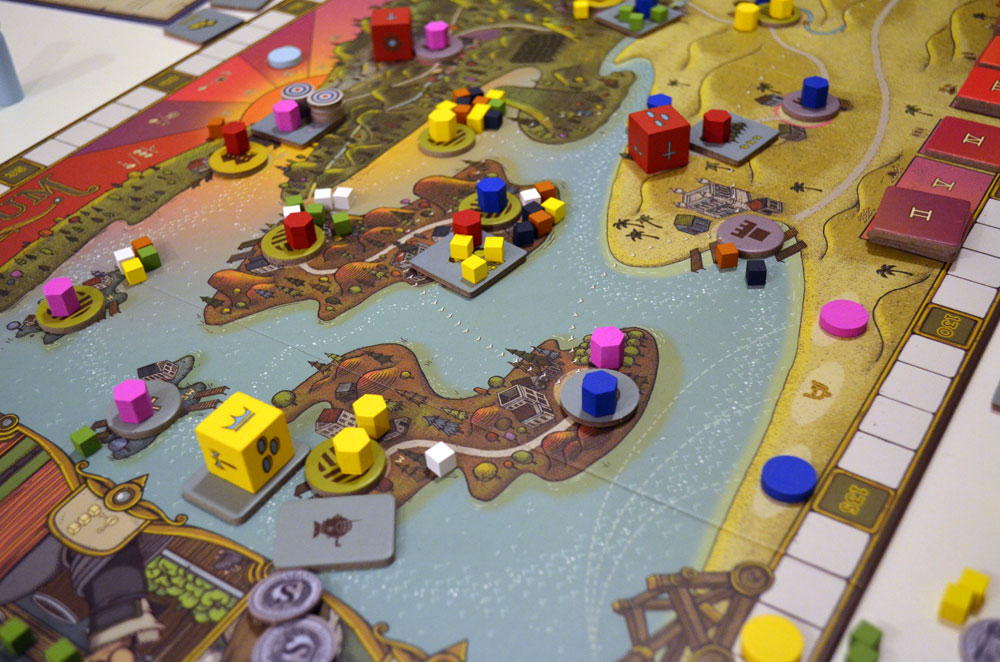
Unsurprisingly being a large game, with a lot of separate parts, the rules are quite lengthy. There is a lot to explain, and due to how the game operates, not usually a logical place to start. So the rules do an admirable job of communicating how the various elements work. However they don’t feel very intuitive, and finding the answers to specific questions can be quite time consuming.
These kinds of issues don’t break the fundamental game play, but they do slow it down as players strain to decipher what is happening. And while it is true that repeated plays will diminish these problems, as players become familiar with what and where everything is, the initial obstacle of getting to this realisation may be too much for some players to stick with it.
In the presence of the right players Feudum is an intense, tactical and enjoyable game. Players need to be involved, and paying attention, otherwise they are going to become a hindrance towards the games progress. Which means that this game is for very particular groups of players, and not ideal for someone to casually take up. Still, those with the players and time to invest in learning Feudum are going to be rewarded with a highly replayable and fun experience.
Feudum was designed by Mark Swanson, and is published by Odd Bird Games. It is available online or in selected game stores.


